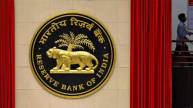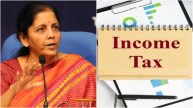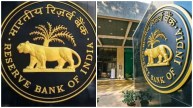New Delhi: A tiny group of fisherman operate in the shallow coastal waters off Pooneryn in northern Sri Lanka, a destitute, lonely region not far from the southernmost tip of India. It’s where Indian billionaire Gautam Adani, who just overtook Jeff Bezos as Asia’s richest man, proposes to construct renewable energy projects, placing him in the middle of a global political conflict.
A pivotal battleground due to its location on important global shipping lanes and its ability to feed New Delhi’s concern about being encircled by its Asian rival, Sri Lanka is currently experiencing its worst economic crisis since gaining independence from Britain in 1948. As a result, India has reengaged and is attempting to tip the balance in a strategic struggle with China on the island.
Adani, a steadfast supporter of Indian Prime Minister Narendra Modi, is at the forefront of these initiatives. His group has consistently refuted accusations that it signed shady port and energy deals that were closely linked to New Delhi’s interests, claiming that the investments satisfied Sri Lanka’s needs. However, some Sri Lankan lawmakers have made this accusation.
Adani, who sits atop a $137 billion fortune, is in charge of a vast empire that includes ports, coal mines, and the production and distribution of electricity. While Adani derives the majority of his wealth from India, he has gradually entered into more international agreements and stated to shareholders in July that he seeks a “broader expansion” outside of India with “several” foreign governments approaching his conglomerate to build their infrastructure.
Adani’s apparent closeness to Modi’s government and those actions have led to speculation that the businessman could provide the funding for India’s opposition to China, whose Belt and Road infrastructure initiative aims to strengthen Beijing’s influence in key nations and on the international stage.
“In countries that the Indian government has better relations than the Chinese government, Adani could find success,” said Akhil Ramesh, a resident fellow at the Pacific Forum research institute in Honolulu.
While India lacks the financial clout of its neighbour, Adani’s ventures in nations like Israel and Sri Lanka put Chinese state-owned companies in competition with them.
And the most extreme manifestation of this tension is in Sri Lanka. Multiple Indian and Sri Lankan officials told Bloomberg News that Adani’s investments there are supporting the goals of the Modi administration on the teardrop-shaped island, similar to how his enterprises in ports, power, and cement align with the national economic priorities. Adani has frequently refuted claims that Modi’s administration gives his businesses preferential treatment.
A team from the Adani Group, which aims to invest $70 billion in renewable energy, visited the north of Sri Lanka shortly after that meeting. Since the country’s 26-year civil war came to an end in 2009, the region has been severely lacking in investment.
According to numerous sources with direct knowledge of the situation, the visit appeared to be a turning point since not long after, the Rajapaksa administration stopped Chinese solar projects on islands in the Palk Strait between India and Sri Lanka due to security concerns from New Delhi. Later, the termination of the solar projects was verified on social media by the Chinese embassy in Colombo.
Just months after signing a $750 million deal for the Colombo port, Adani stressed the “strong links” between the two countries at a meeting with the then-President of Sri Lanka, Gotabaya Rajapaksa, in October of last year. It was a rare instance of Indian infrastructure investment in Sri Lanka after Colombo had previously turned to Beijing, which through Belt and Road has sponsored everything from ports to highways, and spent lavishly on debt-fueled projects.
According to local media sources, Adani secretly inked agreements to develop 500 megawatts of renewable energy projects in Pooneryn and Mannar, two more northern districts near to India. This information was later corroborated by a tweet from Sri Lanka’s power minister, Kanchana Wijesekera.
India “is worried about Chinese access to the Indian Ocean, and being encircled by Chinese friendly regimes in Pakistan, Sri Lanka and Bangladesh,” said Katharine Adeney, a professor and expert on South Asian politics at the University of Nottingham. Adani’s supplanting of China’s solar power projects represents “a strategic move and one that we are likely to see more of,” she said.
Both the Adani Group and the Indian foreign ministry’s spokespeople declined to comment. Requests for comment from the president of Sri Lanka and the ambassador of China to Colombo were not answered. Wijesekera, the minister of power, also didn’t return Bloomberg’s messages.
The Indian billionaire has even begun to openly criticise China, claiming in September at a conference in Singapore that Belt and Road was encountering “opposition” and that China was becoming “increasingly isolated.”









